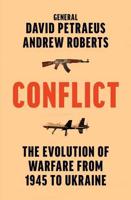Publisher's Synopsis
*Includes pictures *Includes accounts of the battles by soldiers and generals on both sides *Includes online resources and a bibliography for further reading World War II was fought on a scale unlike anything before or since in human history, and the unfathomable casualty counts are attributable in large measure to the carnage inflicted between Nazi Germany and the Soviet Union during Hitler's invasion of Russia and Stalin's desperate defense. The invasion came in 1941 following a nonaggression pact signed between the two in 1939, which allowed Hitler to focus his attention on the west without having to worry about an attack from the eastern front. While Germany was focusing on the west, the Soviet Union sent large contingents of troops to the border region between the two countries, and Stalin's plan to take territory in Poland and the Baltic States angered Hitler. By 1940, Hitler viewed Stalin as a major threat and had made the decision to invade Russia: "In the course of this contest, Russia must be disposed of...Spring 1941. The quicker we smash Russia the better." (Hoyt, p. 17) The surprise achieved by the German invasion in 1941 allowed their armies to advance rapidly across an incredibly wide front, but once winter set in, the two sides had to dig in and brace for German sieges of Russian cities. In the spring of 1942, Germany once more made inroads toward Stalingrad, Stalin's own pet city. Not surprisingly, he ordered that it be held no matter what. There was more than vanity at stake though. Stalingrad was all that stood between Hitler and Moscow. It also was the last major obstacle to the Russian oil fields in the Caucuses which Stalin needed and Hitler coveted. If the city fell, so would the rest of the country, and Hitler would have an invaluable resource to fuel his armies. Meanwhile, Leningrad, which had a population of roughly three million on the eve of the German attack, was one of the victims of the Russian unpreparedness, but once the siege began in the fall of 1941, the Soviets knew they were in a desperate struggle to the death. In fact, the Russians wouldn't have even been given a chance to surrender if they had wanted to, because the orders to the German forces instructed them to completely raze the city: "After the defeat of Soviet Russia there can be no interest in the continued existence of this large urban center...Following the city's encirclement, requests for surrender negotiations shall be denied, since the problem of relocating and feeding the population cannot and should not be solved by us. In this war for our very existence, we can have no interest in maintaining even a part of this very large urban population." The Third Reich's dictator initially viewed Moscow as a relatively trivial objective, only to be seized once the Red Army suffered defeat in detail. In fact, he planned a pause during the bitter Russian winter, conserving German strength for a fresh offensive in spring of 1942. Wisely, According to Chief of Operations Colonel Heusinger, Hitler manifested "an instinctive aversion to treading the same path as Napoleon [...] Moscow gives him a sinister feeling." At the Battle of Kursk, the vast expanses of southern Russia and the Ukraine provided the Eastern Front arena where the armies of Third Reich dictator Adolf Hitler and Soviet dictator Josef Stalin wrestled lethally for supremacy in 1943. Endless rolling plains - ideal "tank country" - vast forests, sprawling cities, and enormous tracts of agricultural land formed the environment over which millions of men and thousands of the era's most formidable military vehicles fought for their respective overlords and ideologies. The battle for Berlin would technically begin on April 16, 1945, and though it ended in a matter of weeks, it produced some of the war's most climactic events and had profound implications on the immediate future. It ushered in over 45 years of the Cold War.










